Revealed: the world's most populated cities
The top 25

Aleksandr Ozerov/Shutterstock
Since 2008 more than half the world’s population has lived in towns and cities. Urbanisation is continuing at a rapid rate, and a United Nations report predicts that by 2050 68% of the world will live in urban areas – many of them megacities with millions and millions of inhabitants. More than 500 cities now boast populations of over a million, with the largest breaking 20, 25 and even 30 million.
Do you know which cities are the world's most populous? Fnd out...
25th. 12.7 million: Moscow, Russia

Pavel L/Shutterstock
The Russian capital is the only one of the world's 25 biggest cities located wholly within Europe. The city grew rapidly after the Second World War thanks in part to high migration from the countryside – perhaps why it is affectionately nicknamed 'the big village'. A low birth rate means that Russia's overall population is decreasing, so migration and immigration likely accounted for Moscow's 0.25% population increase between 2023 and 2024.
24th. 13.3 million: Shenzhen, China

HelloRF zCool/Shutterstock
Shenzhen is a port city and technology hub in the Chinese province of Guangdong. Approximately 19 miles (30km) north of Hong Kong, the city has witnessed a population explosion over the last two generations – chiefly due to internal migrants following employment opportunities – and today it is China’s most densely populated city. Since 2008 Shenzhen has been designated one of UNESCO’s Design Cities thanks to its creative industries, exciting cultural landscape and flourishing urban design.
23rd. 13.8 million: Rio de Janeiro, Brazil

Diego Grandi/Shutterstock
Brazil’s second city is renowned for its beaches and for hosting the world’s largest carnival celebrations, which see approximately two million people a day partying and participating in colourful street parades. In recent years, Rio’s Zona Oeste (West Zone) has seen particular growth – both in population and in wealth. Unfortunately, domestic migration has also increased the number of residents living in poverty – estimates suggest that somewhere between one in five and one in four of the city’s inhabitants live in favela shantytowns.
22nd. 14 million: Bengaluru, India

Ashwin pic/Shutterstock
In 2014 the information technology hub known as Bangalore was officially renamed Bengaluru, reflecting its name in Kannada – the local language. Nicknamed 'the Silicon Valley of India', the city has seen high internal migration driven by employment opportunities in call centres and technology companies – despite its position high on the Deccan Plateau around 3,000 feet (900m) above sea level. That altitude accounts for lush green spaces and Bengaluru's reputation as India’s 'Garden City'.
21st. 14.4 million: Lahore, Pakistan

Katja Tsvetkova/Shutterstock
Domestic migration is again a key factor in Lahore’s population surge, which has seen the city cross the 14 million mark in the past year. Escaping rural trouble spots and natural disasters has partly fuelled the movement of people into the city, and today Pakistan is one of Asia’s most rapidly urbanising countries. Lahore is an economic and industrial hub that's Pakistan's second largest city and the provincial capital of Punjab, boasting historic attractions like the Mughal-era Lahore Fort and Shalamar Gardens, which make up a UNESCO World Heritage Site.
20th. 14.5 million: Tianjin, China

Govanz/Shutterstock
Approximately 70 miles (112 km) southeast of Beijing, Tianjin straddles the Hai River and has long been a major seaport and commercial hub. Since undergoing major reconstruction in the wake of the devastating 1976 Tangshan Earthquake, Tianjin has evolved into a modern high-rise city. Recent years have seen particular growth in the Binhai New Area, the site of the Yujiapu Financial District that's nicknamed 'China’s Manhattan'. A thriving commercial sector and good employment opportunities make Tianjin an attractive move for many Chinese citizens.
19th. 14.6 million: Guangzhou, China

shiji ao/Shutterstock
Guangdong Province's largest city, Guangzhou is around 75 miles (120km) northwest of Hong Kong and a centre of manufacturing, trade and finance. These industries have long attracted people to the city, and China’s rapid economic growth continues to create opportunities in and around Guangzhou. Many residents communicate and make payments using popular instant messaging service WeChat, which was originally developed in the city.
18th. 14.9 million: Manila, Philippines

Joseph Oropel/Shutterstock
The Philippines was originally named after King Philip II of Spain, and Manila’s Intremuros, the walled historic district at the city's heart, was constructed in the late 16th century as the Spanish colony’s administrative hub. Today, the Philippines is one of the 15 most populous countries in the world, but its historically high birth rate has been slowly dropping for several years. With many Manila residents heading overseas to earn money for themselves and their families, migration from the countryside is now the main factor swelling the city's population.
17th. 15.6 million: Kolkata, India

Mazur Travel/Shutterstock
Historic landmarks like the General Post Office, Writers’ Building and Victoria Memorial are reminders that the city once known as Calcutta was long considered the second city of the British Empire – after only London. The census of 1911 – the year the capital of British India moved from Calcutta to Delhi – records the city's population as 949,144. Today India is the world's most populous country and Kolkata boasts a population more than 15 times that size, which is still growing rapidly thanks mostly to domestic migration, particularly from the state of Bihar.
16th. 15.6 million: Buenos Aires, Argentina

Studio New-Art/Shutterstock
Argentina’s capital looks out onto the River Plate – an enormous estuary formed by two mighty rivers emptying into the South Atlantic. Roughly 2,390 miles (3,846km) south of the equator, it's comfortably the southernmost city on this list, and the second largest city on the South American continent. Locals are known as Portenos (literally, 'port city people') thanks to the city's maritime heritage and the fact that historically many residents arrived by boat from Italy and Spain. High levels of immigration continue to give Buenos Aires a multicultural vibe.
15th. 16 million: Istanbul, Turkey
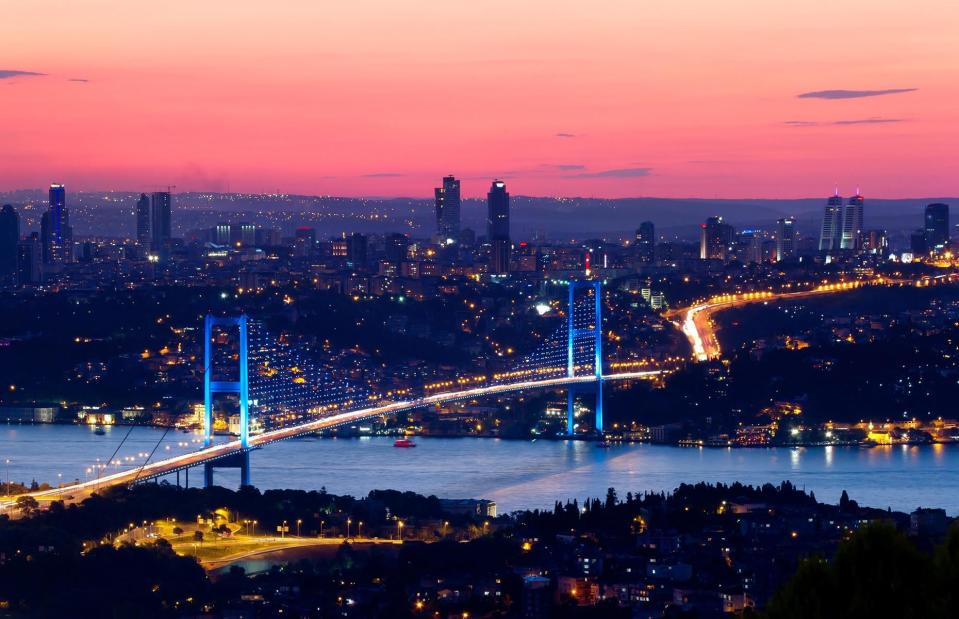
Faraways/Shutterstock
Straddling the Bosphorus Strait at the point where Asia and Europe meet, Istanbul is the only city on this list to span two continents. Approximately two thirds of its residents live on the European side, where historic attractions such as the Hagia Sophia, Topkapi Palace and Galata Tower draw large crowds of tourists. Ferries, bridges – including the 15 July Martyrs Bridge and Fatih Sultan Mehmet Bridge – and the Eurasia Tunnel enable residents to live on one continent and commute to work on another.
14th. 16.5 million: Lagos, Nigeria
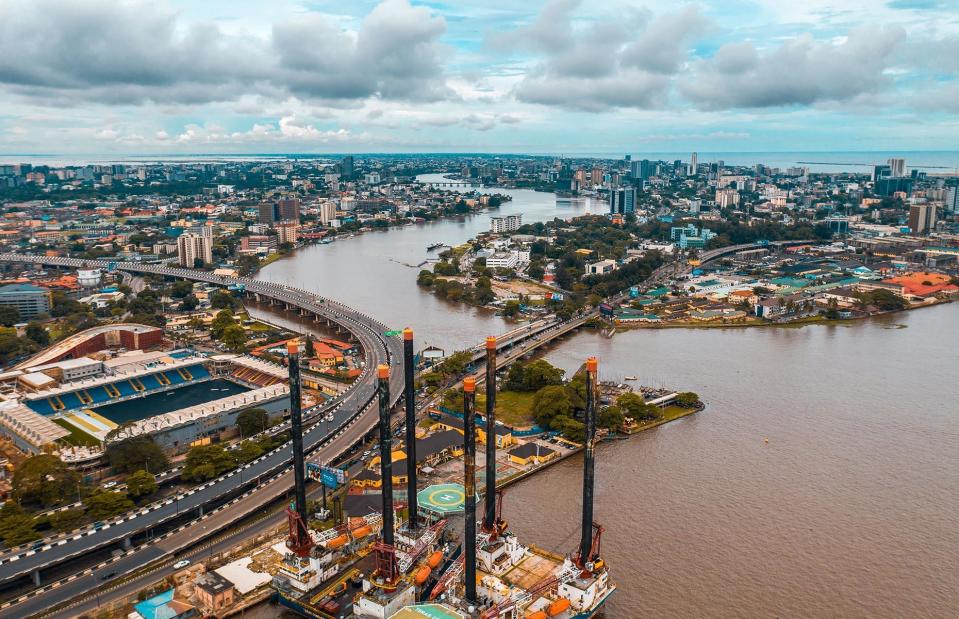
Wirestock Creators/Shutterstock
Nigeria’s most populous city was the country's capital until 1991, when the purpose-built city of Abuja replaced it. Traffic infamously clogs Lagos' roads and the honking of horns is part of daily life, while the city's densely-packed inhabitants are drawn from across Nigeria and the wider region. Country and city are expanding thanks to Nigeria's very high birth rate, and Lagos grew by 3.7% between 2023 and 2024. There's a longstanding rivalry between 'mainlanders' and 'islanders' – residents of the comparatively wealthy and central Lagos Island.
13th. 17 million: Kinshasa, DR Congo

Issa Kashala/Shutterstock
The southern hemisphere’s second most populous city grew by 4.39% between 2023 and 2024 – comfortably the highest rate on this list. That equates to an increase of almost 700,000 people. This is driven partly by the Democratic Republic of the Congo's extremely high fertility rate – the third highest in the world behind Angola and Niger – and partly by a surge of people moving from the countryside to the capital. The University of Toronto’s Global Cities Institute predicts that Kinshasa will be the most populous city in the world by 2075.
12th. 17.6 million: Karachi, Pakistan

Aqib Yasin/Shutterstock
This sprawling port city is the capital of Sindh province, which represents the letter 's' in Pakistan's name. Karachi's well-protected natural harbour has allowed its port to serve the Indus River Valley and the wider Punjab region for centuries, fuelling the city's growth. The partition of India and Pakistan saw a huge influx of people into the city in 1947, and big-city economic opportunities continue to draw people to this day. The 62-storey Bahria Town Icon, an 896-foot (273m) skyscraper that is now Pakistan's tallest building, was completed in Karachi in 2023 as a monument to the city's confidence.
11th. 17.8 million: Chongqing, China

MyCreative/Shutterstock
With a history spanning more than 3,000 years, Chongqing was temporarily China's capital during the Second World War and has subsequently developed into a major industrial hub. The city has grown up around the confluence of the Jialing and Yangtze rivers with car manufacturing, munitions factories and heavy industry providing ample employment. The city is also known for the thousands of bridges that span its various waterways. Recent additions include the Baijusi Yangtze River Bridge, which carries an eight-lane highway.
10th. 19 million: Osaka, Japan

Cowardlion/Shutterstock
A vast but shrinking metropolis, Osaka is one of only two cities on this list with a negative growth rate. The population fell by 0.24% between 2023 and 2024 – a drop of around 46,000 inhabitants – mainly thanks to Japan's low birth rate and residents moving out of the city to the suburbs. Of the 100 most populous world cities, only New York has experienced more pronounced negative growth in the last year. Osaka officially became a municipality in 1889 but its history is significantly longer, and its magnificent castle was built in 1583.
9th. 21.7 million: Mumbai, India

Towering Goals/Shutterstock
Mumbai’s famous 'Gateway of India' triumphal arch and high-end Colaba district occupy a densely populated peninsula that forms one of India’s biggest and busiest harbours. In the middle of the bay lies Elephanta Island, on which you'll find ornately-hewn caves dating back more than 1,500 years – a testament to Mumbai's long history of human settlement. An industrial powerhouse, an important maritime hub and the home of the Bollywood film industry, Mumbai has by far the highest GDP of any city in India, so its attractions are easy to see.
8th. 22.2 million: Beijing, China

Hello RF Zcool/Shutterstock
Mao Zedong proclaimed Beijing the capital of the People’s Republic of China in 1949, restoring an honour that it first held in the 13th century. At its heart, the Forbidden City palace complex housed China's emperors during the Ming and Qing dynasties, ranging from its completion in 1420 into the early 20th century. Although Beijing is still growing, this growth has been driven mostly by migration, as China's birth rate is at a record low and the country's population has fallen two years running.
7th. 22.5 million: Mexico City, Mexico
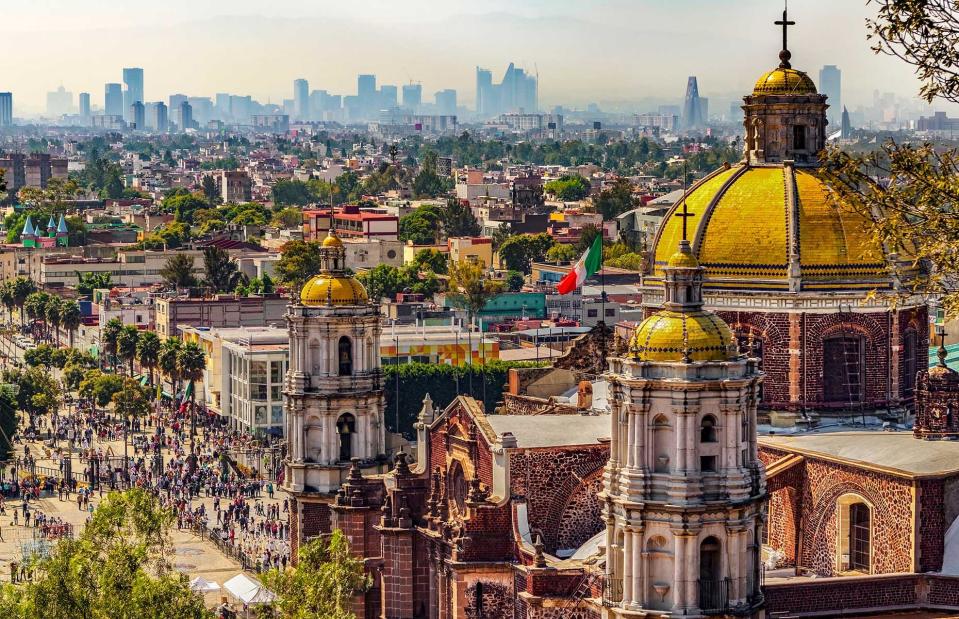
WitR/Shutterstock
North America’s most populous city sprawls across an area greater than the countries of Tonga and Singapore combined. Spanish conquistadors founded the city on the ruins of Tenochtitlan, the Aztec Empire's former capital, and it subsequently expanded over a drained lake. The city is currently facing a water crisis, with limited rainfall and the aquifer that has traditionally supplied the city starting to run low. Air pollution is also a concern, with vehicle exhaust fumes and other emissions trapped by surrounding mountains.
6th. 22.6 million: Cairo, Egypt

Ivan Vdovin/Alamy
The African continent’s most populous city was founded by the River Nile in AD 969. Yet remnants of far older buildings, including the Roman-era Babylon Fortress, can be seen in the Old Cairo area, while the even-older Pyramids of Giza are not far away. The much anticipated Great Egyptian Museum is set to open soon, and will contextualise Egypt's ancient history for a new generation of Egyptians. Cairo owes its size to a familiar combination – a high birth rate and high migration from other areas of the country.
5th. 22.8 million: Sao Paulo, Brazil
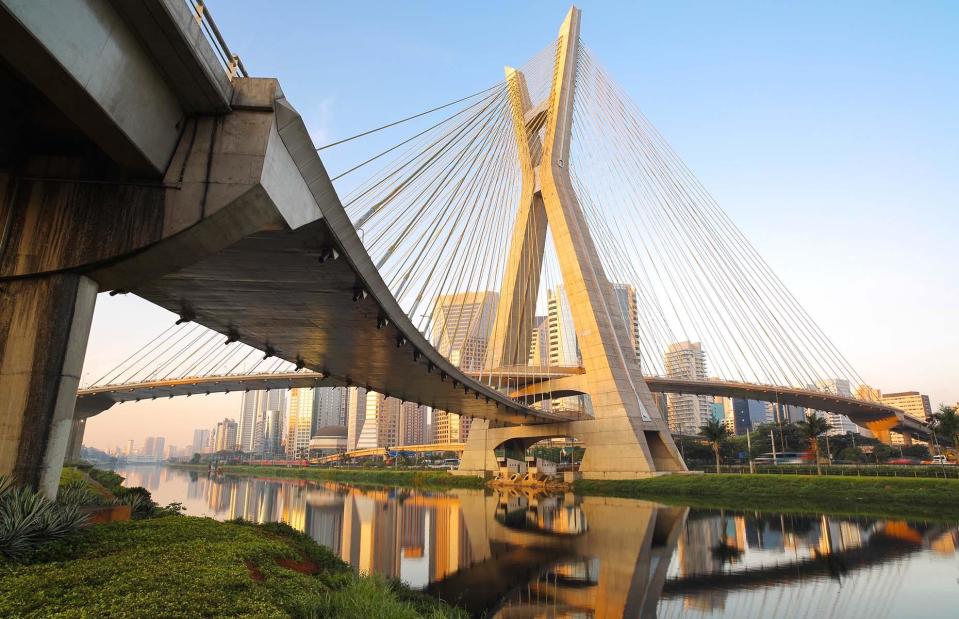
Thiago Leite/Shutterstock
Sao Paulo is the world's most populous city outside Asia and the most populous city in the southern hemisphere. Jesuit missionaries gave the city its name in 1554 on the anniversary of St Paul the Apostle’s conversion to Christianity – the religion of the majority of Paulistanos. Though less of a tourist hub than Rio de Janeiro a little way up the coast, Sao Paulo is arguably Brazil's most important industry and business hub, and also claims four of the country's most successful football clubs. The derbies between Corinthians and Palmeiras are particularly legendary.
4th. 23.9 million: Dhaka, Bangladesh
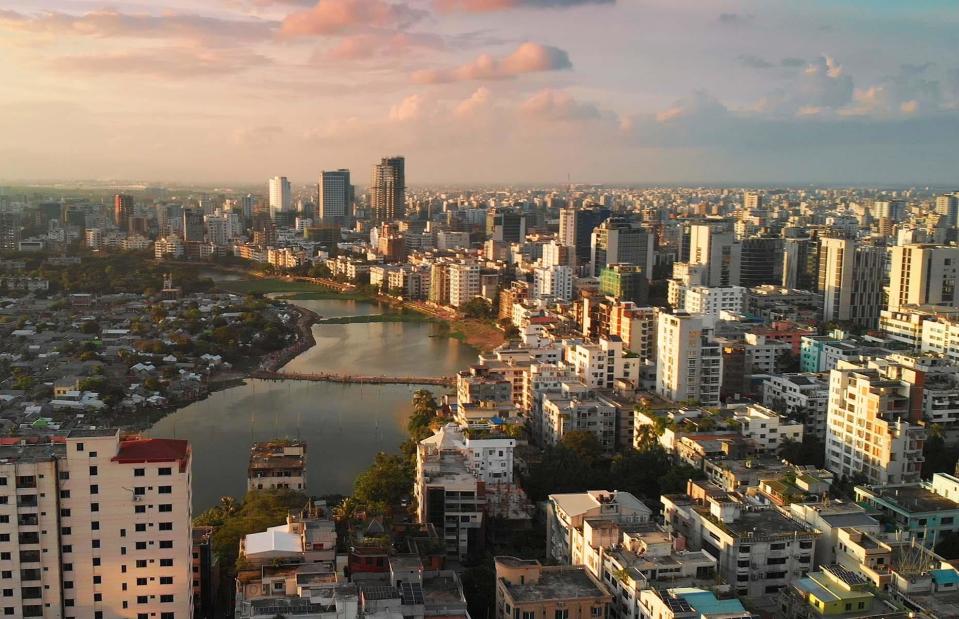
Luminite/Shutterstock
As with many of South Asia’s burgeoning metropolises, Dhaka draws vast numbers of settlers from rural areas, many of whom move to the bright lights of the city in search of a better quality of life. Traffic clogs not just the roads but also the Buriganga River, whose ferries provide transport not only within the city but also to other parts of Bangladesh. Flooding during the monsoon, typically from June to September, sometimes swells the city's numbers as displaced people seek relief.
3rd. 29.9 million: Shanghai, China

ESB Professional/Shutterstock
This port city and trading hub grew rapidly following the 1842 Treaty of Nanking, which opened Shanghai to foreign trade. Parts of the city were effectively controlled by foreign powers – Britain, France, America and later Japan – for much of the 19th and early 20th centuries, and their influence is especially clear to see in the historic Bund district. More recently, China’s emergence as an economic superpower has transformed the skyline, and high-rise living is common. The Shanghai Tower – 2,073 feet (632m) tall and completed in 2015 – is currently the third tallest building in the world.
2nd. 33.8 million: Delhi, India

Manish Jais/Shutterstock
The largest city in the world's most populous country, Delhi is home to 866,000 more people this year than it was in 2023. The city is broadly divided into two parts: the historic Old Delhi in the north and the more recent New Delhi in the south, built in the early 20th century to be the capital of British India. The site of successive empires and kingdoms, legend holds that Delhi has been founded and refounded in slightly different places no fewer than seven times. If current trends continue, Delhi will be the world’s most populous city by 2028.
1st. 37.1 million: Tokyo, Japan

f11 photo/Shutterstock
It may be the world's largest city, but Tokyo’s population fell by 0.21% last year, largely thanks to Japan's low birth rate. It's the third most expensive country in the world to raise a child and many people prioritise their careers over starting a family. The city's infrastructure has to cope with huge passenger numbers, and 3.6 million people pass through Shinjuku Station’s 200 entrances and exits every day. Meanwhile, up to 3,000 people at a time famously use the crosswalk known as the Shibuya Scramble in the trendy neighbourhood of Shibuya.
Read on for our pick of the most beautiful cities in the world

